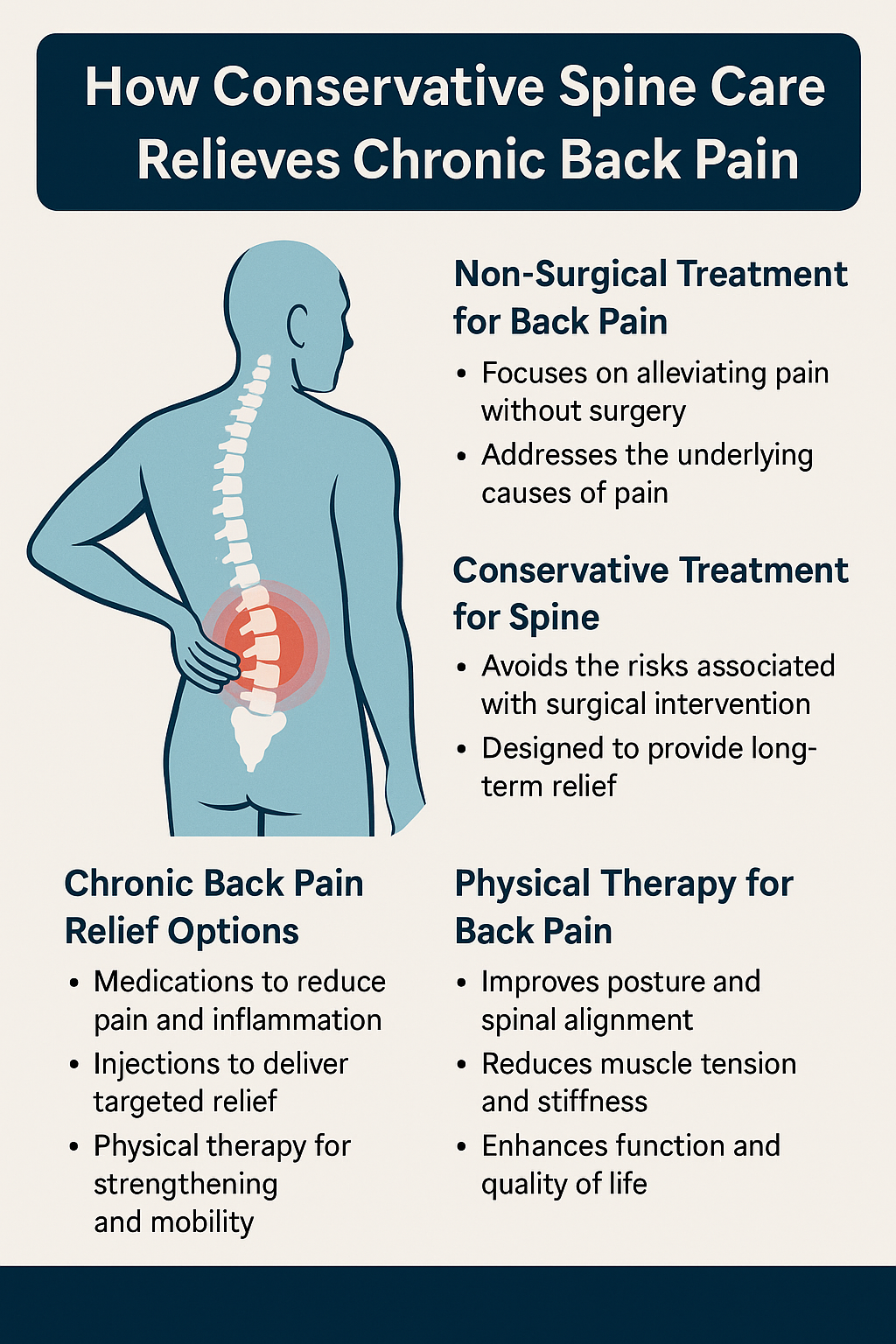Spinal deformities may seem like minor issues at first, but delaying treatment can lead to severe consequences in the long run. Conditions like scoliosis, kyphosis, and lordosis not only affect posture and mobility but can also have lasting impacts on overall health. The earlier these conditions are addressed, the better the outcomes, minimizing risks and complications. In this blog, we’ll explore why early treatment for spinal deformities is crucial, the benefits it offers, and how early intervention can lead to better health outcomes.
1. What Are Spinal Deformities?
Spinal deformities refer to abnormal curvatures or misalignments in the spine that can affect posture, movement, and overall spinal health. The most common types of spinal deformities include:
Scoliosis: A sideways curvature of the spine, typically appearing in childhood or adolescence.
Kyphosis: A forward rounding of the upper back, often seen in older adults or as a result of other spinal conditions.
Lordosis: An excessive inward curve of the lower back, sometimes due to muscular imbalance or congenital conditions.
These deformities can worsen over time if not addressed early, leading to increased pain, decreased mobility, and potential complications.
2. Risks of Untreated Spinal Deformities
Spinal deformities, if left untreated, can lead to a number of serious health risks, including:
Progression of the Condition: Conditions like scoliosis and kyphosis can worsen with age, increasing the curvature and exacerbating symptoms. This can cause discomfort and pain, as well as limit mobility.
Increased Risk of Nerve Damage: Severe spinal deformities may compress nerves, leading to pain, numbness, and even loss of function in the affected limbs.
Worsening Posture and Quality of Life: As spinal deformities worsen, individuals may experience changes in posture that affect their daily activities, work, and overall quality of life. The deformity may cause them to feel fatigued or unable to perform tasks they once could easily do.
Surgical Complexity: Delayed treatment often leads to more complicated surgeries. Early intervention allows for less invasive, more effective treatment options.
Benefits of Early Treatment for Spinal Deformities
Prevention of Condition Progression: Early treatment helps prevent spinal deformities, like scoliosis, from worsening, maintaining better alignment and minimizing further curvature.
Non-Surgical Treatment Options: Braces and physical therapy can manage spinal deformities effectively, especially in children, and avoid the need for invasive surgery.
Reduced Need for Invasive Surgery: Early intervention can stabilize the spine, often preventing the need for complex spinal deformity surgeries later.
Better Long-Term Outcomes: Early treatment leads to improved posture, reduced pain, and enhanced mobility, ensuring a healthier, stable spine for the future.
4. Treatment Options for Early-Stage Spinal Deformities
When it comes to treating spinal deformities early, there are several options available. The appropriate treatment will depend on the severity of the condition, the age of the patient, and the specific deformity in question.
4.1 Non-Surgical Treatment Options
Bracing: Bracing is commonly used to treat conditions like scoliosis in children and adolescents. A brace helps prevent further curvature of the spine and keeps the spine aligned as the patient grows. For patients with kyphosis, a posture brace may help improve alignment and prevent further deformity.
Physical Therapy: Physical therapy can help strengthen the muscles supporting the spine and improve posture. Stretching, strengthening exercises, and other rehabilitation techniques can help manage spinal deformities and prevent them from worsening.
Observation and Monitoring: In cases of mild spinal deformities, especially in pediatric patients, regular monitoring may be all that is needed. The deformity may stabilize or improve over time with careful observation.
4.2 When Surgery Is Necessary
In some cases, especially when the deformity is severe or doesn’t respond to non-surgical treatments, surgery may be necessary. The types of spinal surgeries available include:
Spinal Curvature Correction: Surgical options like spinal fusion or the insertion of rods and screws can help straighten the spine and stabilize the curvature. These procedures are often used for advanced cases of scoliosis or kyphosis.
Pediatric Spinal Deformity Surgery: In pediatric patients, surgery may be required if the deformity progresses beyond a certain point. Early intervention can help prevent the need for more complex surgeries in the future.
5. How to Detect Spinal Deformities Early
Regular check-ups and screenings are essential for early detection of spinal deformities. Some signs to watch for include:
Uneven shoulders or hips
Visible curvature of the spine
Back pain or discomfort, especially in children
Difficulty standing or walking straight
If you notice any of these symptoms in yourself or a loved one, it’s important to consult with a spine specialist immediately for a thorough evaluation.
Advanced diagnostic tools like X-rays, MRIs, and CT scans can help detect the severity of the deformity and guide the best course of treatment.
Schedule Your Consultation Today
If you're concerned about spinal deformities or need guidance on treatment options, Dr. Zain Mirza and his expert team at Texas Spine and pain are here to help. Contact us today to schedule a consultation and take the first step toward better spinal health.
Conclusion:
Early treatment for spinal deformities is essential for preventing the condition from worsening and improving the patient’s quality of life. Whether through non-invasive treatments or timely surgical intervention, addressing spinal issues early leads to better outcomes and fewer complications.
If you or a loved one is showing signs of a spinal deformity, don't wait—early intervention is key to preserving spinal health and function.
Frequently Asked Questions (FAQs)
What are the most common spinal deformities?
The most common spinal deformities include scoliosis (sideways curvature), kyphosis (forward rounding), and lordosis (excessive inward curve).
How can I tell if I have a spinal deformity?
Symptoms may include uneven shoulders, visible curvature of the spine, back pain, or difficulty standing straight. A spine specialist can provide an accurate diagnosis.
Can spinal deformities be treated without surgery?
Yes, many spinal deformities can be managed with non-surgical treatments like bracing, physical therapy, or observation, especially in the early stages.
What is scoliosis treatment?
Scoliosis treatment can include wearing a brace, physical therapy, or, in severe cases, spinal surgery to correct the curvature.
When is surgery required for spinal deformities?
Surgery may be necessary if the deformity progresses and becomes severe, or if non-surgical treatments are not effective.
How long does recovery take after spinal deformity surgery?
Recovery time varies depending on the type of surgery performed, but it generally ranges from several weeks to a few months.
What is the role of a spine specialist in treating spinal deformities?
A spine specialist can diagnose the condition, recommend treatment options, and guide patients through their recovery process.
Can children develop spinal deformities?
Yes, children can develop spinal deformities such as scoliosis, often during growth spurts in adolescence.
What are the long-term effects of untreated spinal deformities?
Untreated spinal deformities can lead to chronic pain, reduced mobility, and in some cases, nerve damage.
How can I prevent spinal deformities from worsening?
Early detection and treatment, regular monitoring, and following prescribed treatment plans are key to preventing spinal deformities from worsening.
 Don't let your content be flagged with AI Detectors - use a Free AI Humanizer
Don't let your content be flagged with AI Detectors - use a Free AI Humanizer
 Don't let your content be flagged with AI Detectors - use a Free AI Humanizer
Don't let your content be flagged with AI Detectors - use a Free AI Humanizer


















